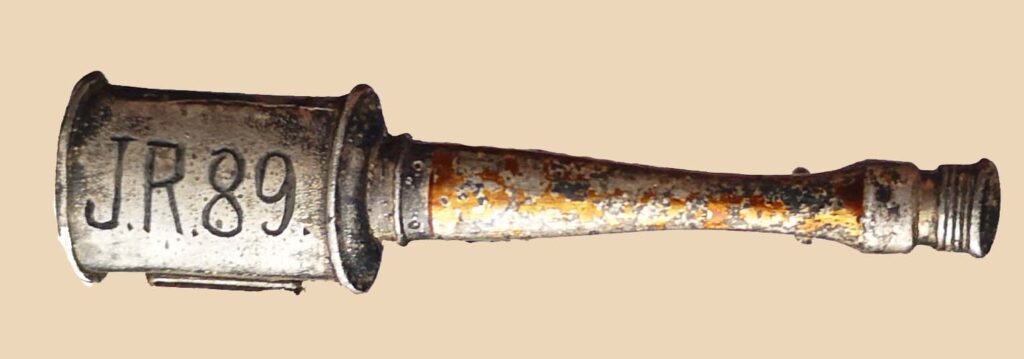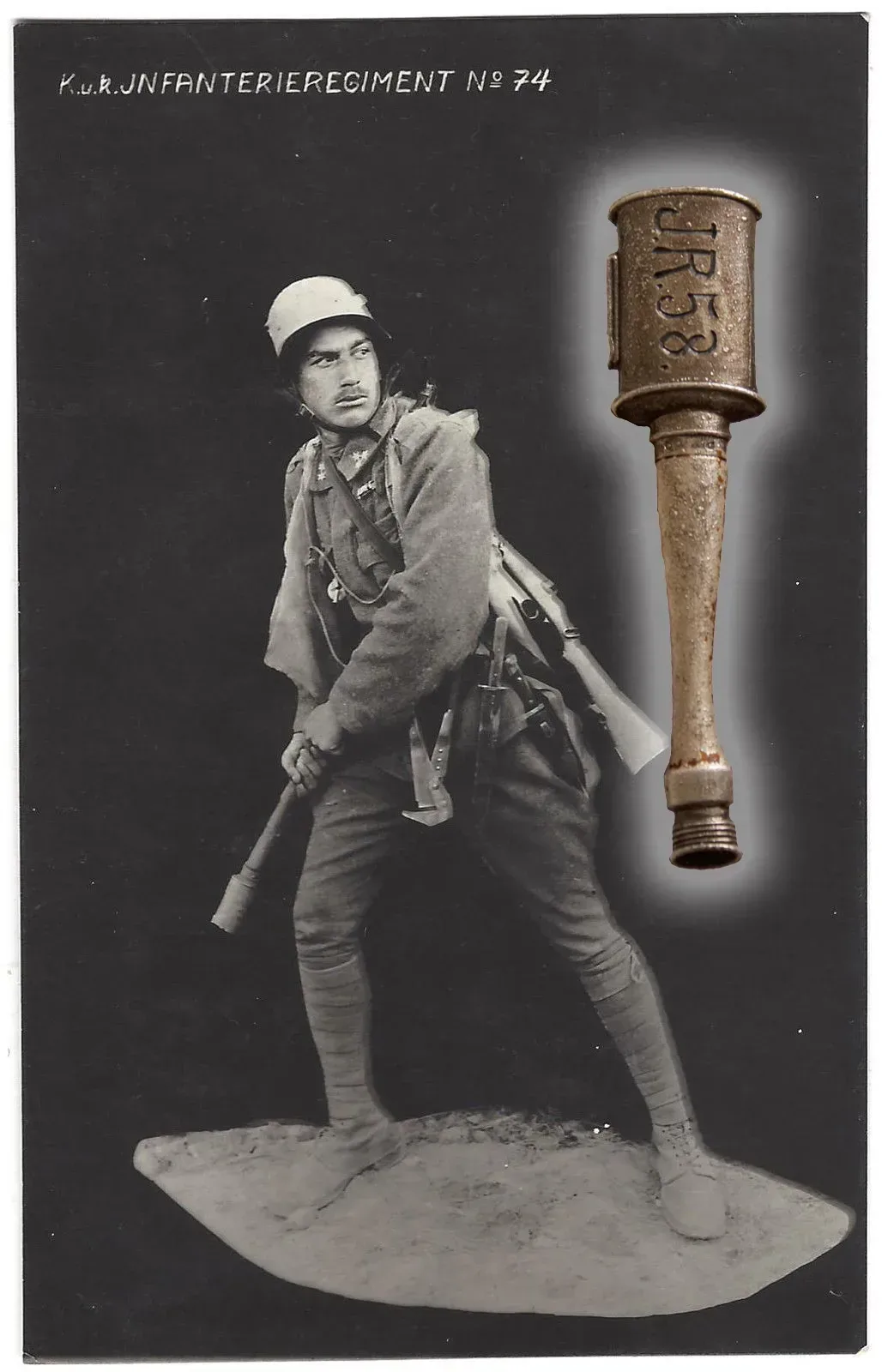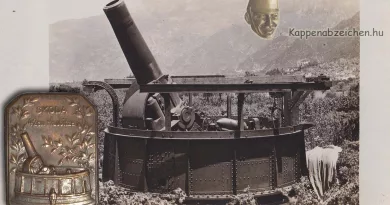Stielhandgranate
Explosive objects thrown on the enemy by hand have been used by various armies since ancient times. In some ages, the application was very common. For example, from the end of the 1600s, some infantry troops were called grenadiers, referring to the hand-held bombs and grenades used in addition to the usual infantry weapons. By the end of the 1800s, the use of the hand grenade declined. Some countries, such as Britain, also removed it from military equipment. In the Russo-Japanese War, however, it played a significant role again in 1905, and at the beginning of the Great War it was also used by the armies of Germany and the Monarchy. Later, it became an indispensable tool of trench warfare on all fronts.

Hand grenades can be used for both defense and attack against an opponent who is restricted in movement (e.g., in a trench, bunker), or a device with a greater rupture effect against attackers can be used by a soldier in cover protecting himself from the impact. The hand grenade is also one of the symbols of trench warfare: it has become the most important weapon of assault soldiers.

Several types of grenades were used in the Army of the Monarchy. I can’t go into detail here. Perhaps the most important and successful was the German-style hand grenade with handle (Stielhandgranate). The handle attached to the warhead served a dual purpose. On the one hand, this made it possible to throw the grenade farther and more accurately. On the other hand, the release cord ran in the handle. After unscrewing the cap at the end of the handle, the cord could be actuated by pulling. This started a slow process similar to burning a match, which after a certain time reached the charge accumulated in the warhead, which exploded. The effect of the explosion was increased by shrapnel. They could be pieces of the exploding steel warhead, other types of shrapnel charges used also in earlier ages, or tearing notched pieces of the mantle that caused injuries. The Stielhandgranate was also used by Germany in World War II.


The photos attached to the post show assault soldiers with different types of hand grenades. I would like to illustrate the general spread of the weapon by presenting two hand grenade-shaped regiment badges. Details like the screwable cap at the end of the handle and the ear attached to the side of the warhead with which the grenade could be hung on the waist belt are clearly visible.




